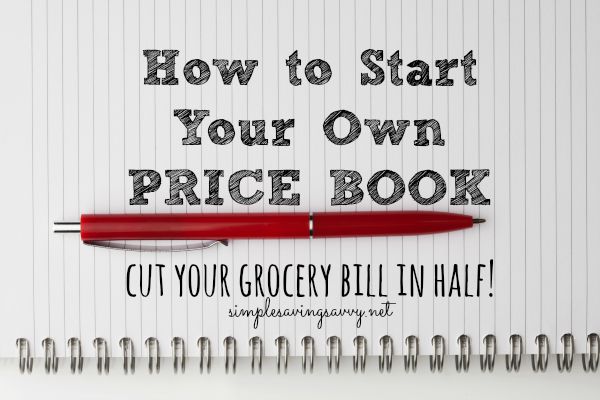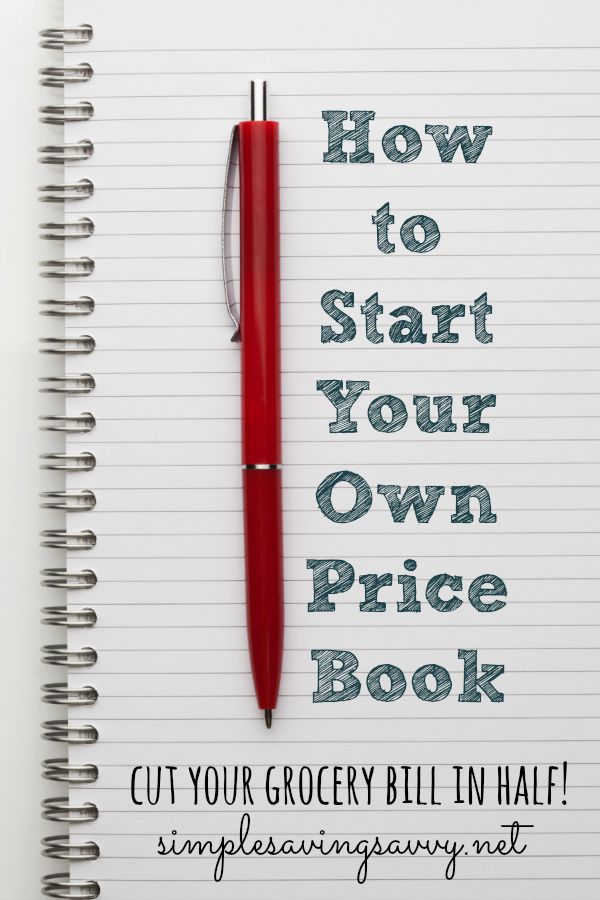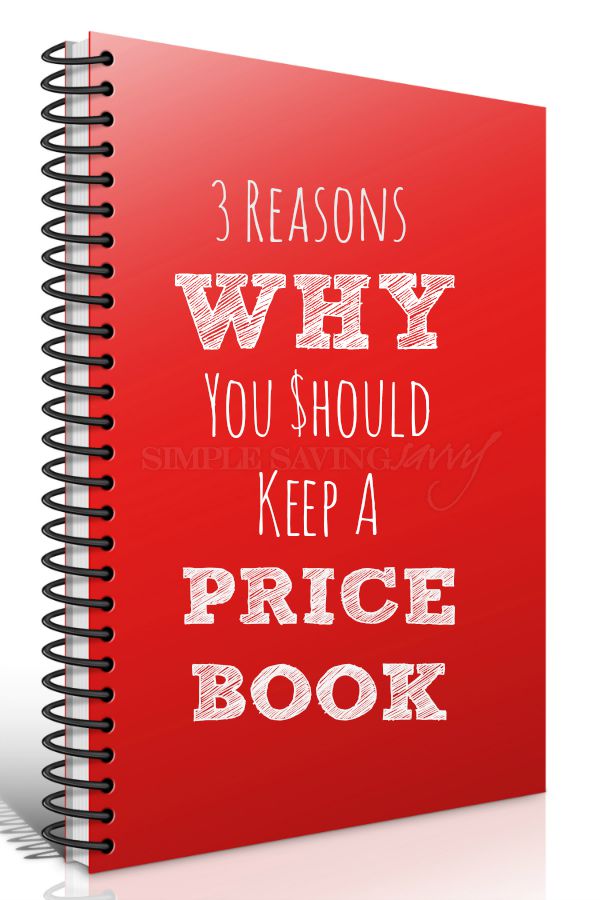
Recently I shared with you why keeping a price book can be a powerful tool for a savvy shopper. A price book is simply a record that can be quickly accessed that shows where and when you can purchase a commonly bought item at the lowest price. It is not a complicated process to create one, but it does take a little bit of time and dedication to ensure it is accurate and thorough.
Here are some tips to help you start your own price book.
Supplies You Will Need
The supplies you will need will depend on whether you choose a paper or electronic method to build your price book.
PAPER METHOD
- Notebook w/ pockets for storing receipts
- Binder w/ pockets for storing receipts
- Paper for recording product/price info if using a binder – Check out our Free Printable Price Book Pages!
ELECTRONIC
- Spreadsheet
- ValueTracker App (IOS – $0.99)
- Simple Pricebook (Android – $0.99)
Save Your Receipts
Most of the information you will need for your price book can be obtained from receipts. They will show you what you spend on the items you buy most. Keep every receipt from every store until you have a chance to evaluate.
You can also record prices of items as you shop.
Start Calculating Unit Prices
When tracking prices, it is very important to note the size of the item so you can calculate the unit price.
Unit price is far more accurate than total cost. For example, if you pay $2 for a 16 ounce jar of peanut butter, the unit price would be $0.13 per ounce. If you pay $2.50 for a 24 ounce jar of peanut butter, your unit price is $0.10 per ounce. Although you’ll pay a little more out of pocket for the 24 ounce jar, you’re saving money in the long run.
Learn to always calculate the unit price with everything you buy. This will show you which deals are really the best deals. (Note: if you are using an electronic record method, this will be done for you.)
Start Recording Prices
If you’re using a notebook, at the top of each price sheet, list an item you buy frequently like coffee or peanut butter. Then use your receipts to record the following information for each product: date, store, brand, size, price AND unit price.
After several weeks or months, your price sheets will be filled with data and you can then circle the current lowest price for quick reference when you shop.
You’ll also begin to see sales cycles and trends so that you’ll be able to predict how long it will be before you’ll find an particular product at its best price.This can help you maximize your savings by knowing when to stock up and when to let a deal go.
If you’re using an app, input your prices. The app will calculate the unit price and show you the lowest price over time.
Create Your Price Book
After you have gathered data for three months, find the cheapest price for every single item you buy on a regular basis and note where and when they are found. Record this information on a master price sheet. This could be on a page in your notebook/binder or in a spreadsheet or an app.
Keep your book updated
As time goes on and you find lower prices, update your master price sheet. Likewise, if prices rise with inflation, you’ll want to adjust pricing accordingly.
After the first three months and after you have your master price sheet compiled, it’s an easy task to keep it updated. The initial work you put into it will pay off quickly. Your price book will allow you to shop the best deals at the best store and cut your grocery bill in half!
Pin this post! And then follow us on Pinterest!

Be sure to read all about why you should keep your own price book!
You might also want to check out our DIY Household Binder Tutorial with FREE weekly, daily and menu planning printables!

